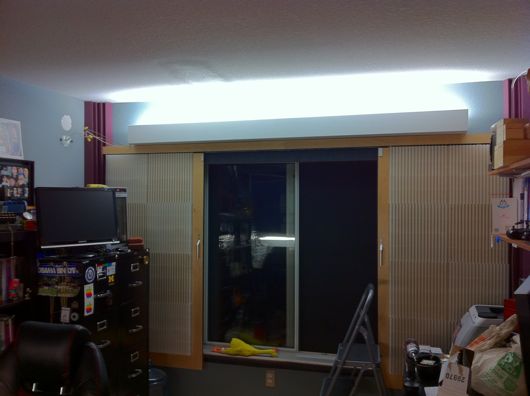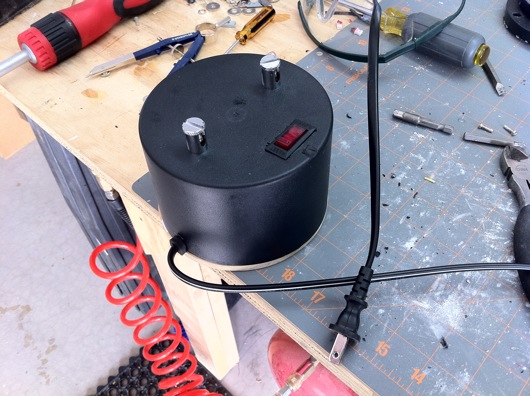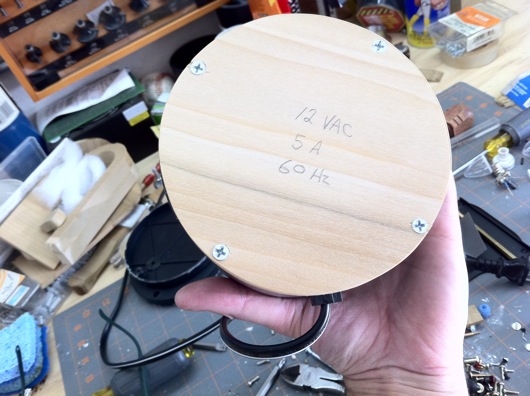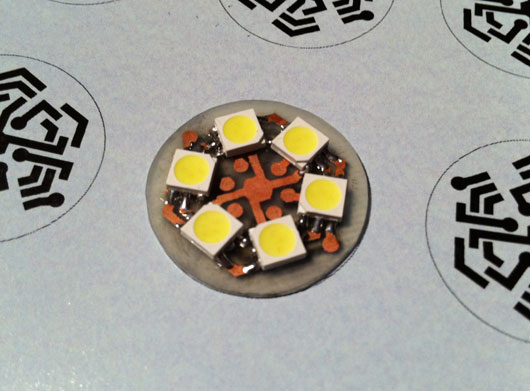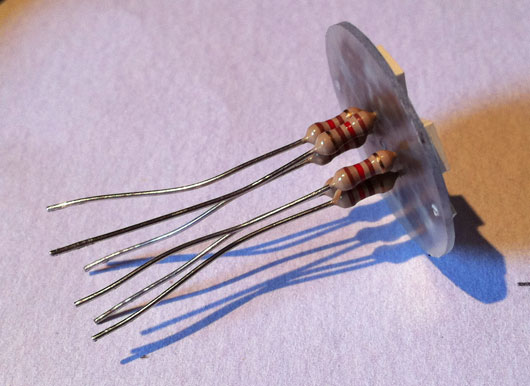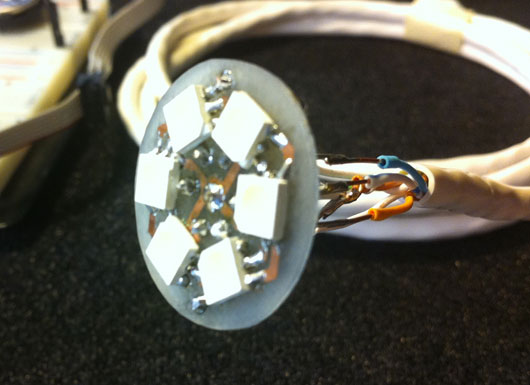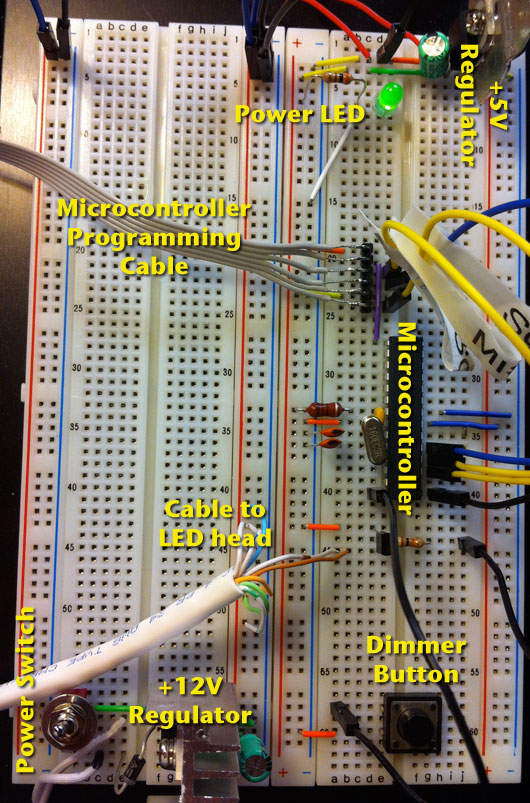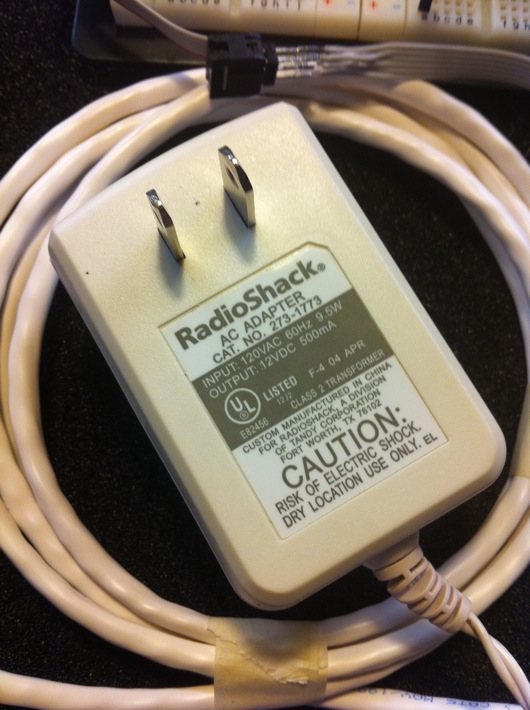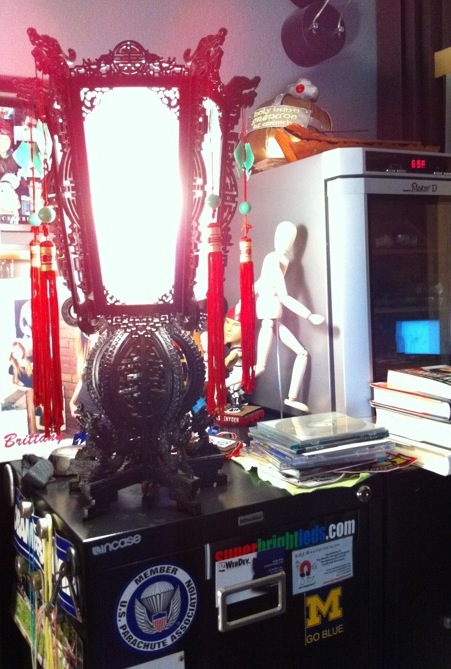I recently rebuilt the lighting in my office because the crappy 12-volt strung lighting from Ikea that the previous owner installed was insufficient for working comfortably in my Man Cave™. Here's the NEW lighting above the sound-proffed barn door window shade things:
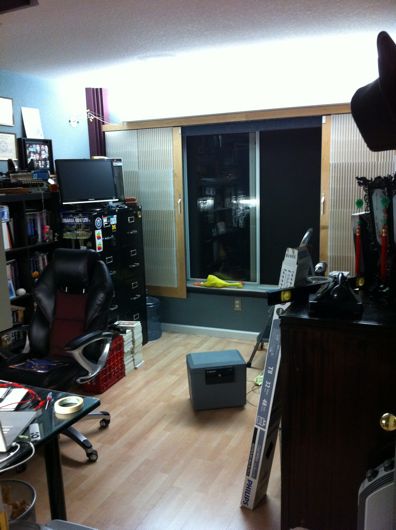
With the intensity of the photo cranked down a bit, you can see the simple valence I made out of pre-primered pine trim board:
The old lighting was 12VAC wire cable lighting with halogen lights. You seem the at Ikea. Two steel cable strung between two walls and the halogen lights hang between the wires at regular intervals. It's really cool, but it isn't very bright and the light is very yellow. I like daylight-ish fluorescent lighting, so that's what I bought to replace the old stuff.
Now, on to the real story: I salvaged the wall wart transformer/power supply for the 12VAC lighting and made a simple 12VAC power supply out of it. Not sure what I'll use that for, yet, but it was fun and I feel like I saved the landfill from containing weird metal and plastic parts.
I removed the pushbutton fuse reset thing and replaced it with a neon lamp power switch with a fuse reset feature and then cut a notch in the base of it to hold a strain-relief thing for a power cable from an old VCR I torn down. Then I put a wood base on the back and screwed in to together and sanded it for a nice finish. I haven't painted the edges black, yet. I also need to put little rubber footies on it to keep it from sliding around on the glass top of my electronics workbench.
Here are the photos:
Completed power supply with power cord and switch.
Bottom is screwed into four holes built into case of wall wart. I wrote the specifications from the sticker on the transformer inside so that I would not forget how this could catch fire or trip a fuse.
I realized after I put it all together and tested the power that the replacement power switch might not trip at the same power draw as the old pushbutton. So, when I laid a big piece of copper wire across the terminals, it sparked and never did trip the switch OR the circuit breaker for the garage workbench. That's probably a fire hazard, but I'll usually have a good quality surge strip (or two) AND a house circuit breaker between my mishaps and the neighborhood power lines.


